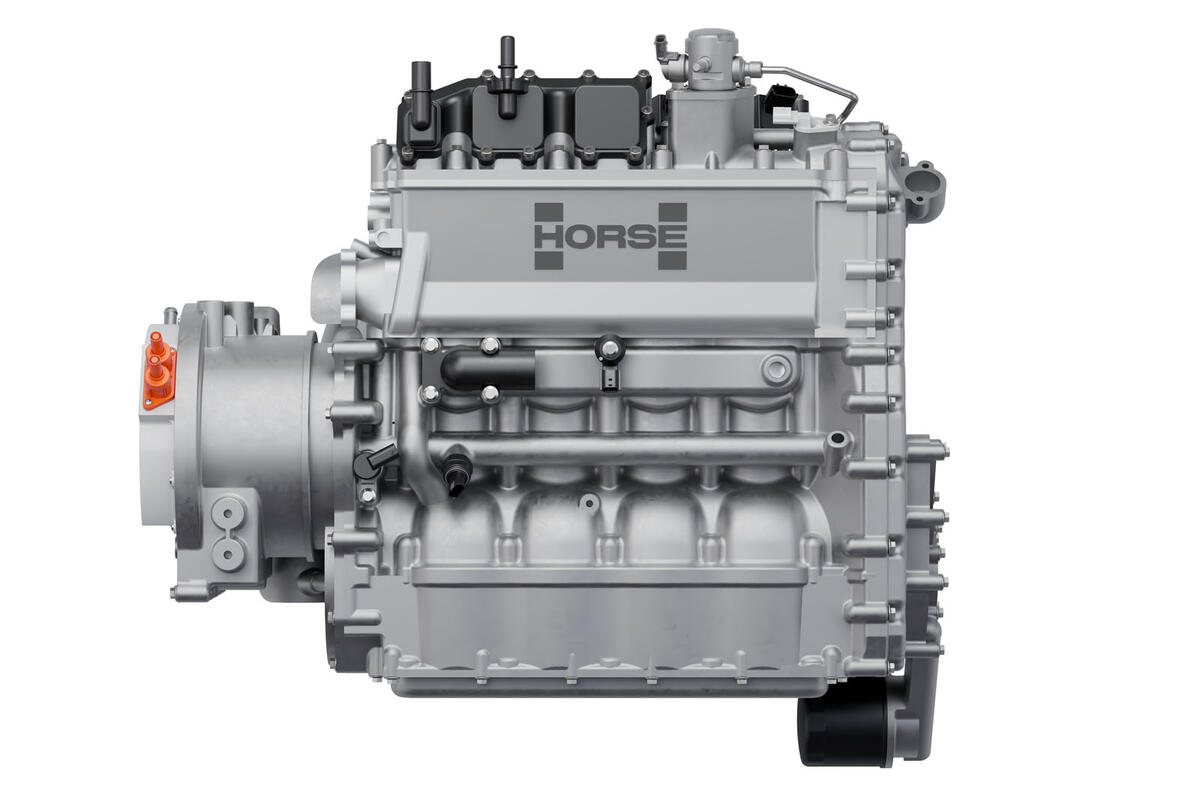Combustion engine firm Horse has revealed a range-extender powertrain that has been designed to allow easy conversions of battery-electric vehicles.
The new set-up, which will be shown by the Renault, Geely and Aramco joint venture at the Munich motor show, comprises a naturally aspirated 1.5-litre four-cylinder engine with an integrated generator and inverter. It produces up to 94bhp and is claimed to be no larger than a briefcase. As such, the unit – named C15 – can be installed in the ‘frunk’ of an EV or at its rear end, either horizontally or vertically.
There will also be a turbocharged version capable of putting out 161bhp that is aimed at D-segment models and commercial vehicles.
The engines have been designed to run on petrol, synthetic fuels and ethanol or methanol flex-fuel. They are said to be compliant with the upcoming Euro 7 emissions regulations.
Neither unit has been engineered to drive a car’s wheels. Instead, they will run in their most efficient rev range for generating electricity for an EV’s drive battery, balanced against noise, vibration and harshness requirements.
Horse CEO Matias Giannini said: “Range-extended EVs [REEVs] are the fastest-growing powertrain category in many global markets. The Horse C15 range-extender solution offers [car companies] a straightforward and cost-effective way to tap into this opportunity, and adapt their native BEV platforms into REEVs. We believe demand for REEVs will continue to grow.”







Join the debate
Add your comment
I have a Mercedes EQA and a Lexus 300e both are fully electric and 00% suitable for waht I bought them for.
If I wanted the Mercedes could have been bought as a plug in hybrid GLA and the Lexus as a hybrid UX300h.
With the exception of the guys who ut a Chevy V8 powertrain in a wrecked Tesla, why would anyone buy an electric car and then install some sort of petrol engine?
EDITED FOR TYPO'S
I have a Mercedes EQA and a Lexus 300e both are fully electric and 100% suitable for waht I bought them for.
If I wanted the Mercedes could have been bought as a plug in hybrid GLA and the Lexus as a hybrid UX300h.
With the exception of the guys who ut a Chevy V8 powertrain in a wrecked Tesla, why would anyone buy an electric car and then install some sort of petrol engine?
That should read
"100% suitable for what I bought them for."
This engine suits a Horseless Carriage better than any other.
Please show a picture of that 'easily converted BEV', no company will re engineer a 'from ground up designed' BEV to accept a petrol engine.